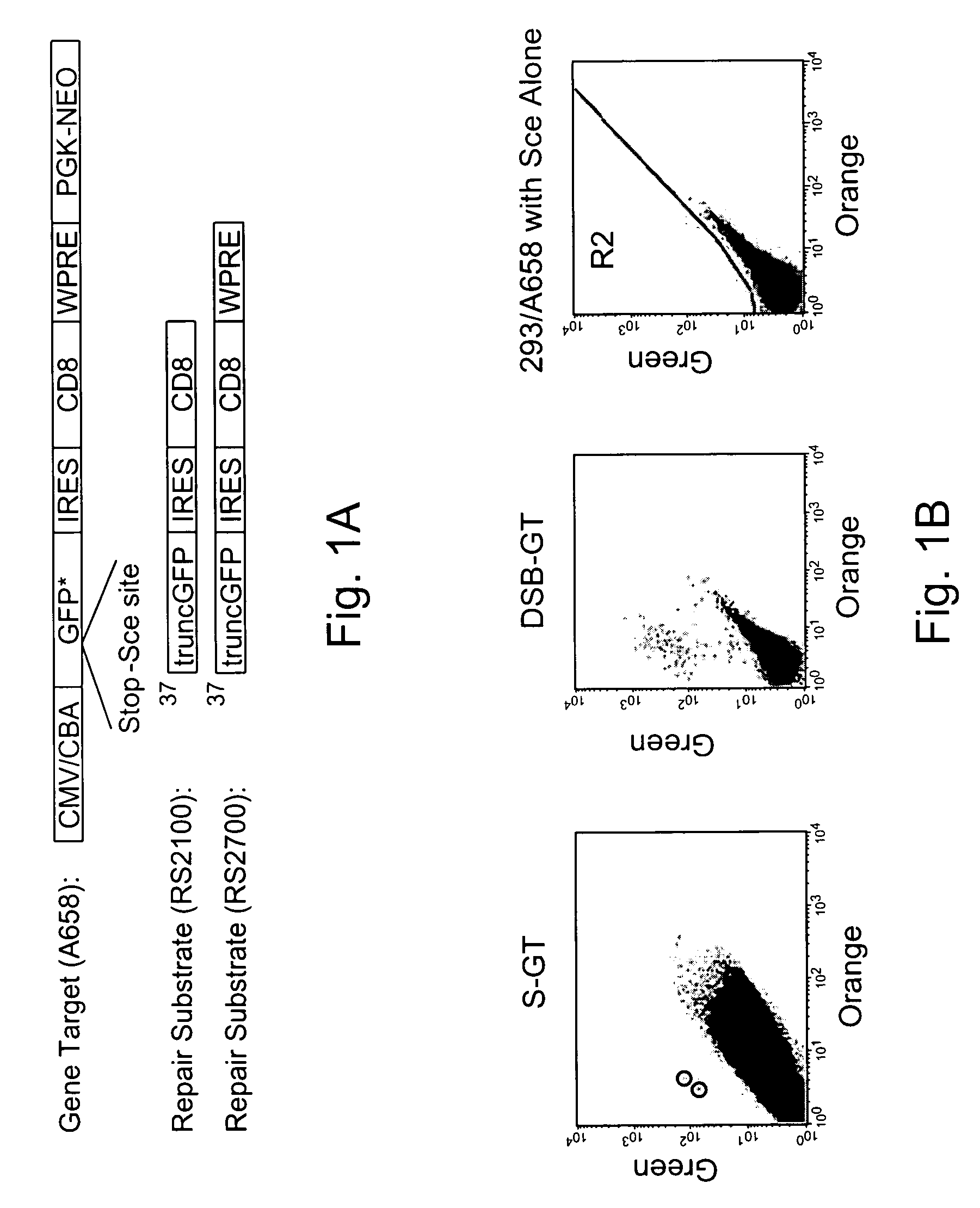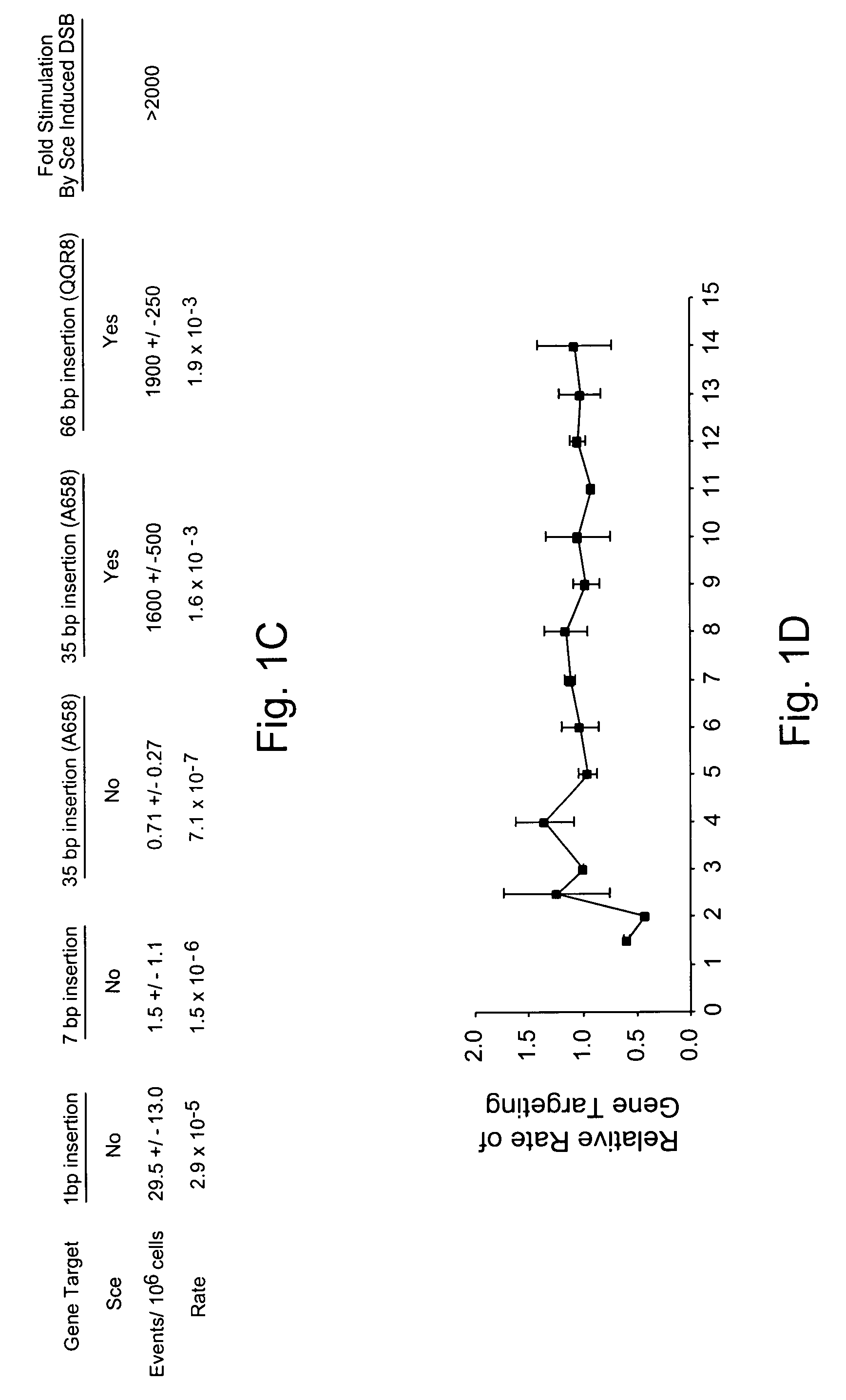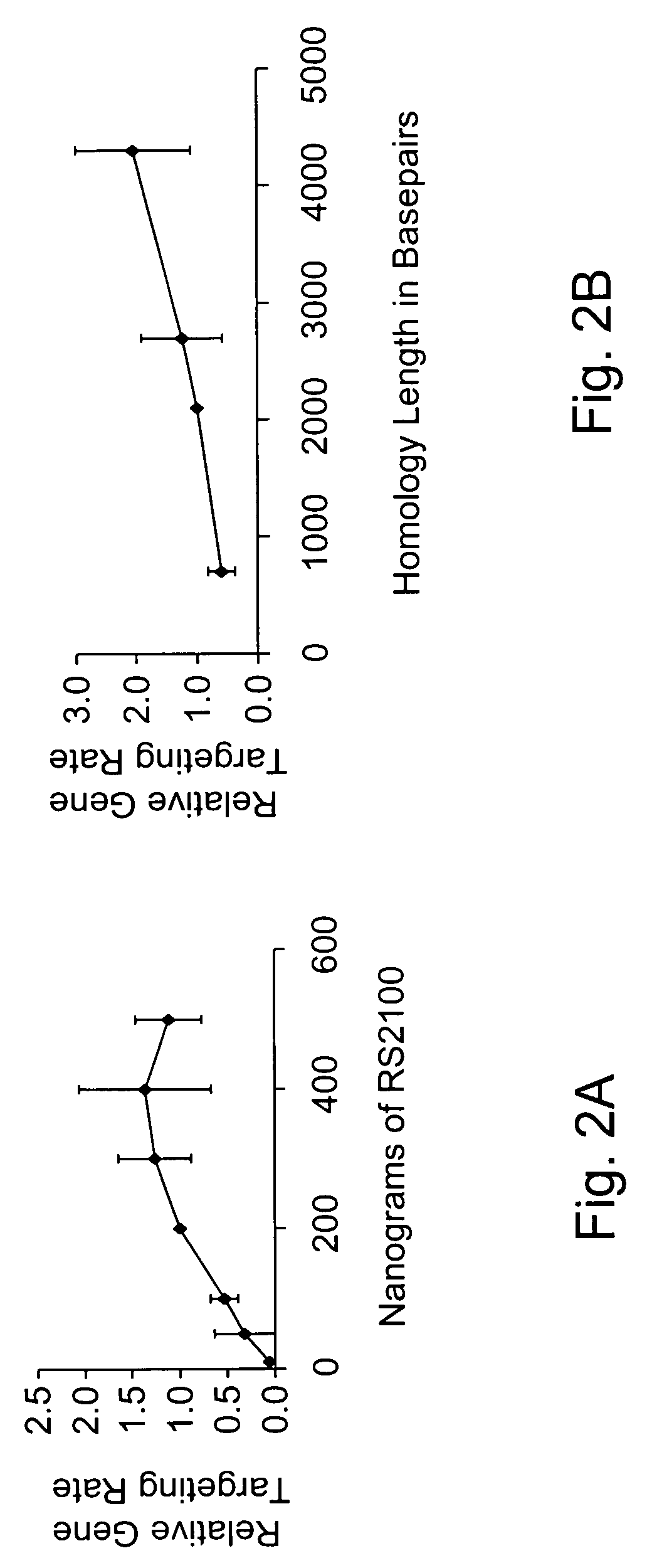Use of chimeric nucleases to stimulate gene targeting
a technology of chimeric nucleases and chimeric nucleases, which is applied in the direction of peptides, immunological disorders, drug compositions, etc., can solve the problems that most of these diseases cannot be treated medically, and achieve the effects of reducing the production or activity of undesirable polypeptides, enhancing the production or activity of beneficial polypeptides, and meliorating genetic disorders
- Summary
- Abstract
- Description
- Claims
- Application Information
AI Technical Summary
Benefits of technology
Problems solved by technology
Method used
Image
Examples
example 1
Chimeric Nucleases Stimulate Gene Targeting in Mammalian Cells
[0148]Gene targeting is a powerful technique for introducing genetic change into the genome of eukaryotic cells. To augment the power of this technique, Applicants have systematically investigated the variables that regulate gene targeting. It is evident that local double-stranded DNA breaks are a powerful stimulus for gene targeting. Thus, Applicants have adapted chimeric nucleases, protein fusions that can be designed to recognize a wide variety of DNA sequences, to stimulate gene targeting up to therapeutically and experimentally useful levels in human somatic cells. This appears to be the first gene targeting in a manner using a chimeric nuclease.
[0149]Since the discovery that sickle cell anemia is caused by a single base pair mutation, it has been a goal to cure the disease by correcting the mutation. With the understanding that numerous diseases are caused by similar small mutations in single genes, the importance o...
example 2
Site-Specific Manipulation of the Genome with Chimeric Nucleases
[0158]Cys2-His2 zinc finger DNA binding domains are modular protein units that can be designed to recognize a wide variety of nucleotide triplets (Wolfe et al., 2000, Annu Rev Biophys Biomol Struct, 29:183–212). For example, using in vitro selection techniques, some research groups have designed zinc fingers that can bind with high specificity to all 16 different GNN nucleotide triplets (Liu et al., 2002, J Biol Chem, 277:3850–3856; Segal et al., 1999, Proc Natl Acad Sci U S A, 96:2758–2763). A research group reported a similar characterization of zinc finger domains that could bind all 16 different ANN nucleotide triplets (Dreier et al., 2001, J Biol Chem, 276:29466–29478). Finally, others have proposed a recognition code for all nucleotide triplets (Sera and Uranga, 2002, Biochemistry, 41:7074–7081; Wolfe et al., 2000, Annu Rev Biophys Biomol Struct, 29:183–212). These codes were developed based on the recognition seq...
example 3
Gene Targeting of Endogenous Sequences
[0166]In example 2, applicants demonstrated the design of chimeric nucleases (zinc finger nucleases in this example) to cleave at sequences derived from endogenous genes (the β-globin gene and the common γ-chain gene). In particular applicants were 100% successful at designing chimeric nucleases to cleave at target sites with the following consensus sequence: 5′ GNNGNNGNN 3′ (SEQ ID NO: 6) where G represents guanine and N represents any nucleotide. Applicants expected, therefore, that one could empirically design a pair of zinc finger nucleases to stimulate gene targeting in a natural gene if that gene contained an inverted repeat of the above consensus sequence with the repeats separated by 6 nucleotides (e.g. 5′ NNGNNCNNC NNNNNN GNNGNNGNNC 3′, SEQ ID NO: 7). Both the GFP gene and the human CD8αgene contain such a sequence.
[0167]In this example, applicants demonstrate the design of chimeric nucleases that stimulate gene targeting in both of the...
PUM
| Property | Measurement | Unit |
|---|---|---|
| nucleic acid | aaaaa | aaaaa |
| stability | aaaaa | aaaaa |
| cell surface | aaaaa | aaaaa |
Abstract
Description
Claims
Application Information
 Login to View More
Login to View More - R&D
- Intellectual Property
- Life Sciences
- Materials
- Tech Scout
- Unparalleled Data Quality
- Higher Quality Content
- 60% Fewer Hallucinations
Browse by: Latest US Patents, China's latest patents, Technical Efficacy Thesaurus, Application Domain, Technology Topic, Popular Technical Reports.
© 2025 PatSnap. All rights reserved.Legal|Privacy policy|Modern Slavery Act Transparency Statement|Sitemap|About US| Contact US: help@patsnap.com



